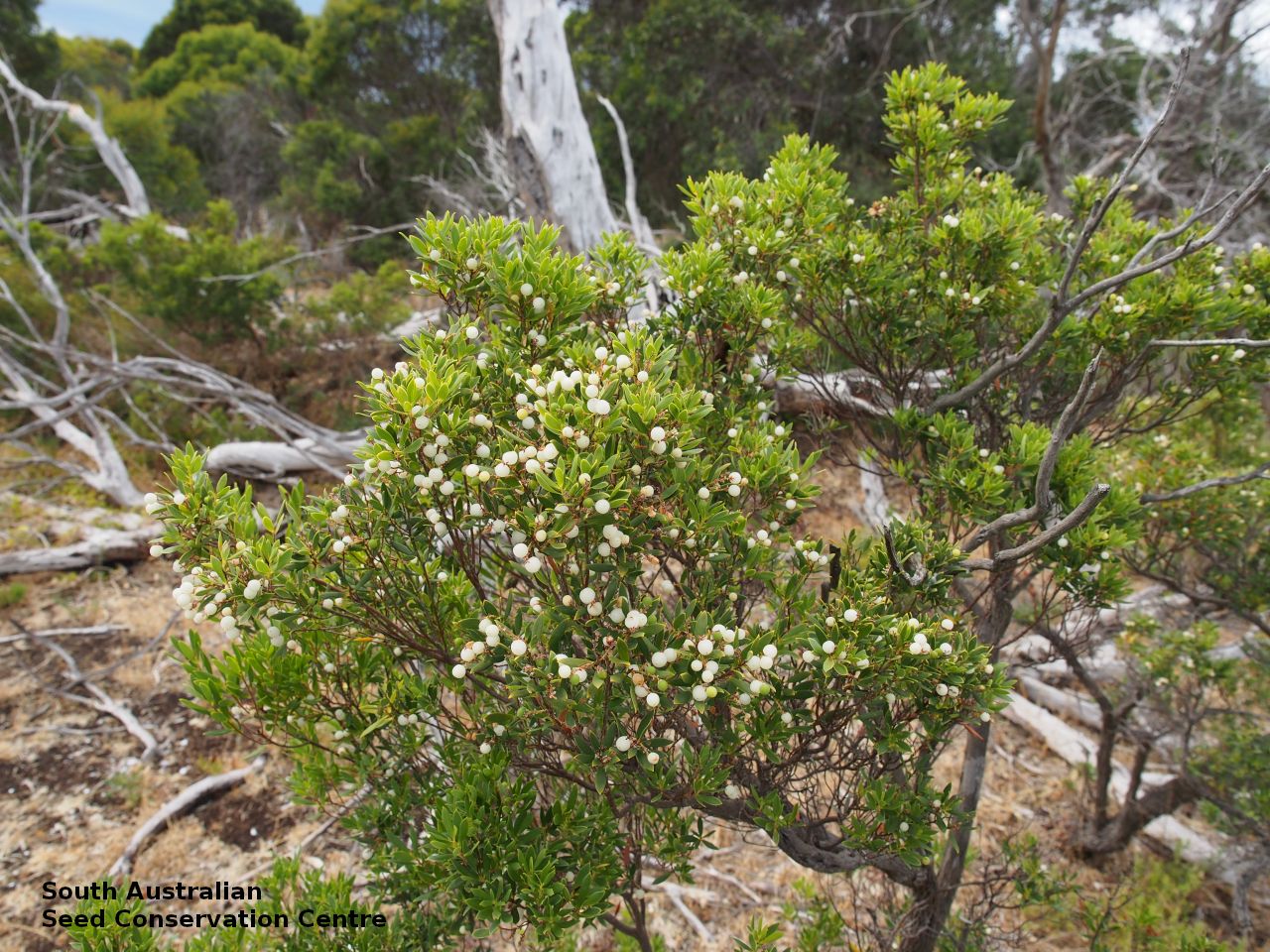
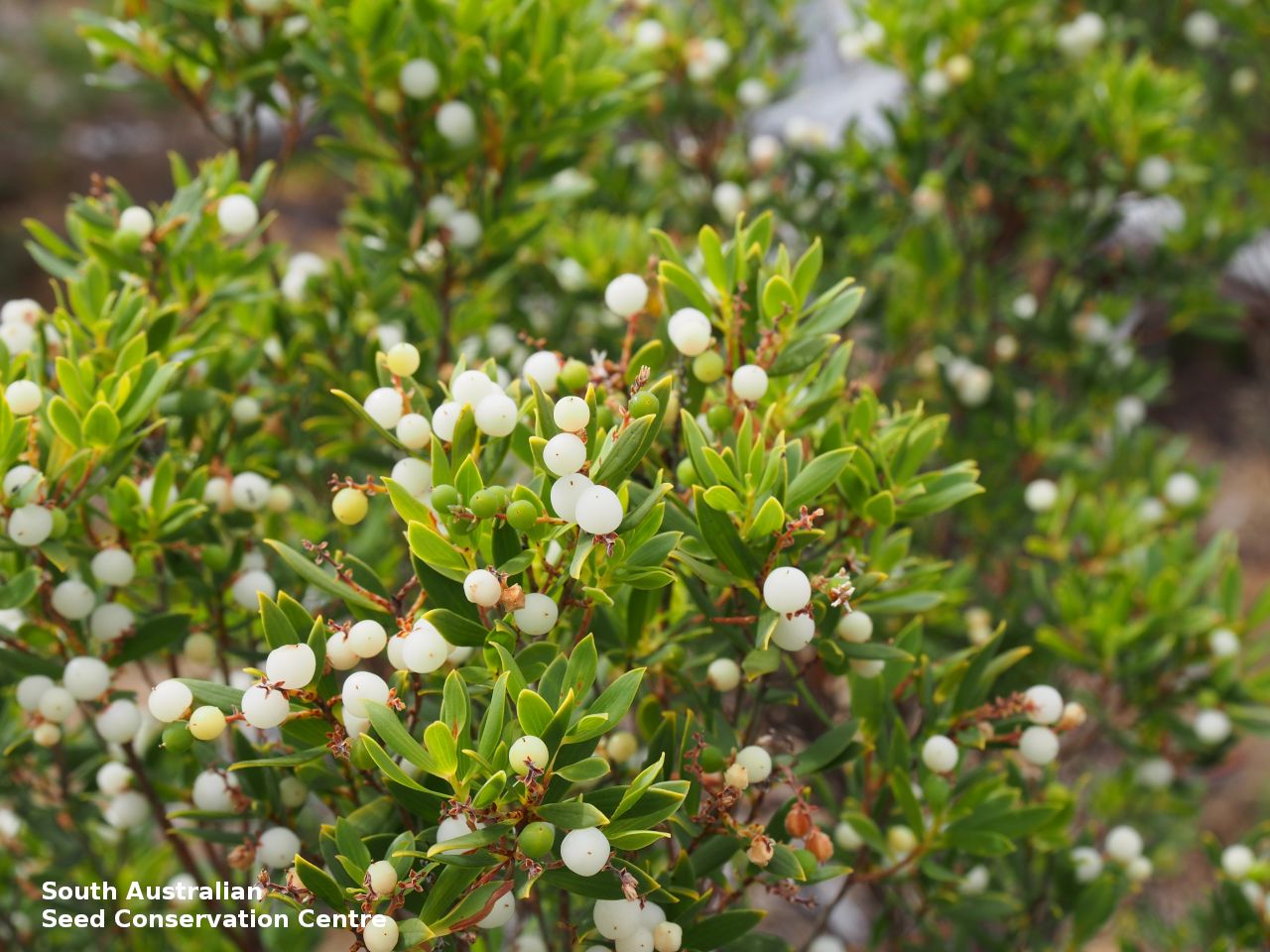
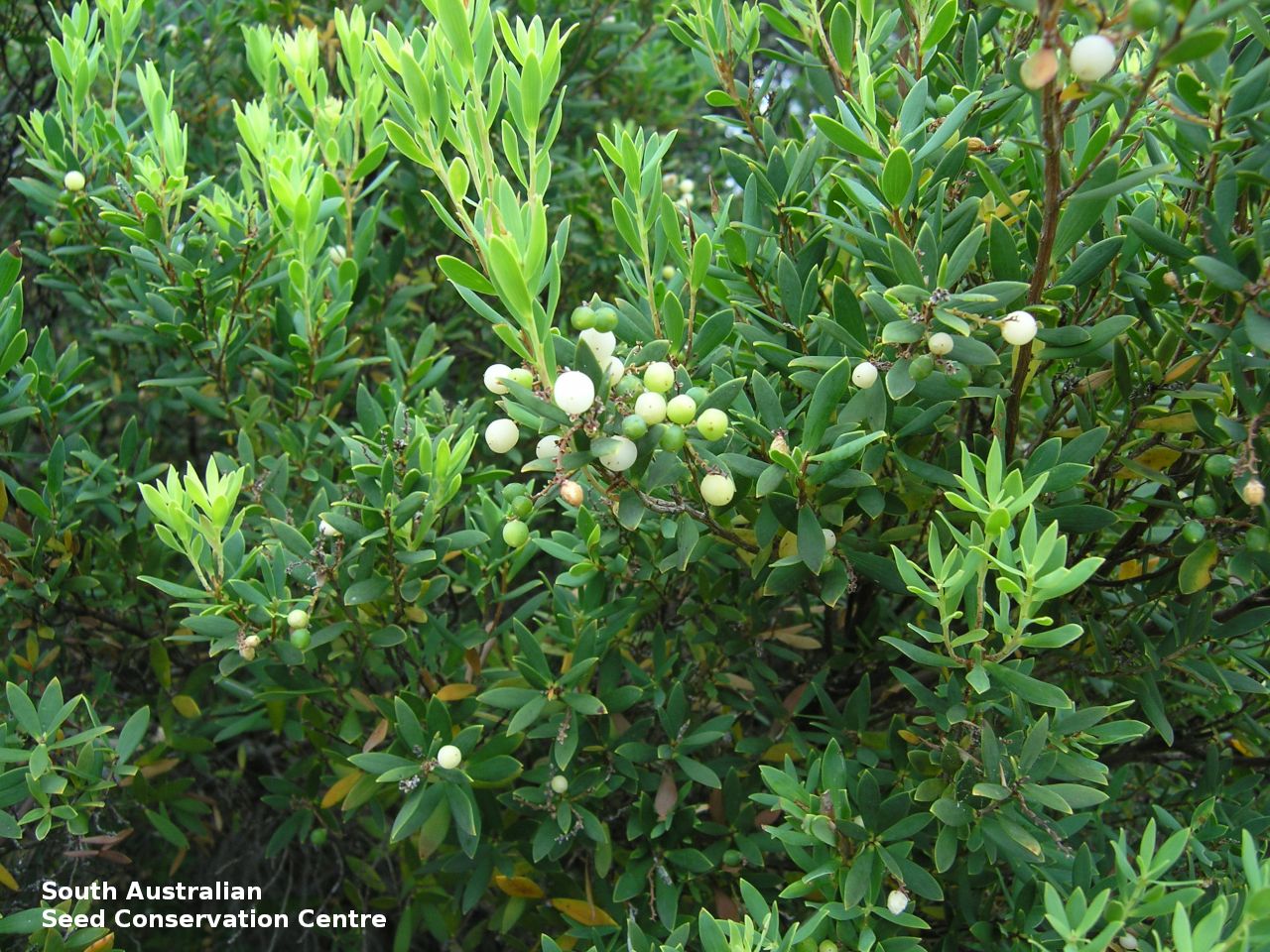
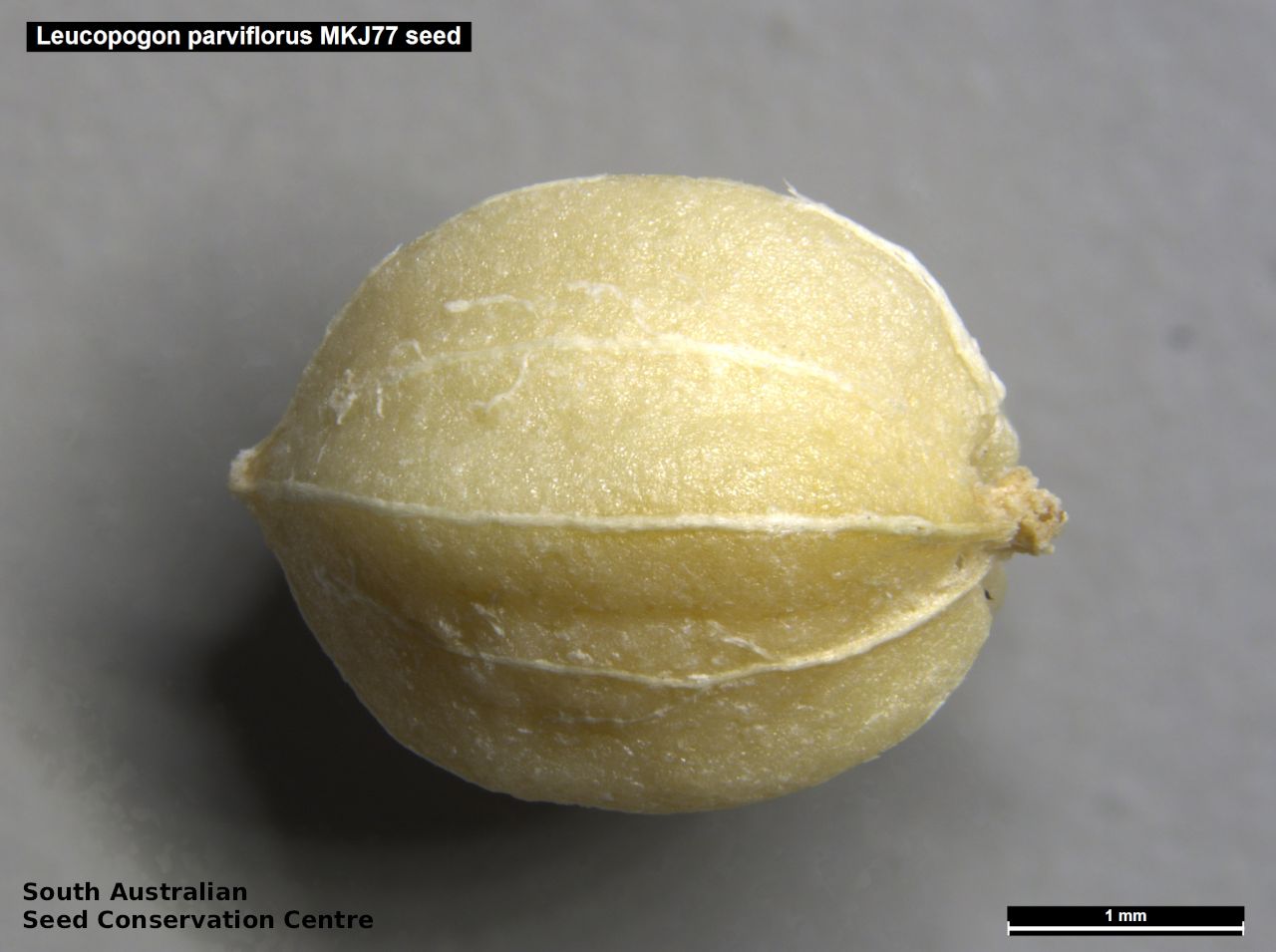
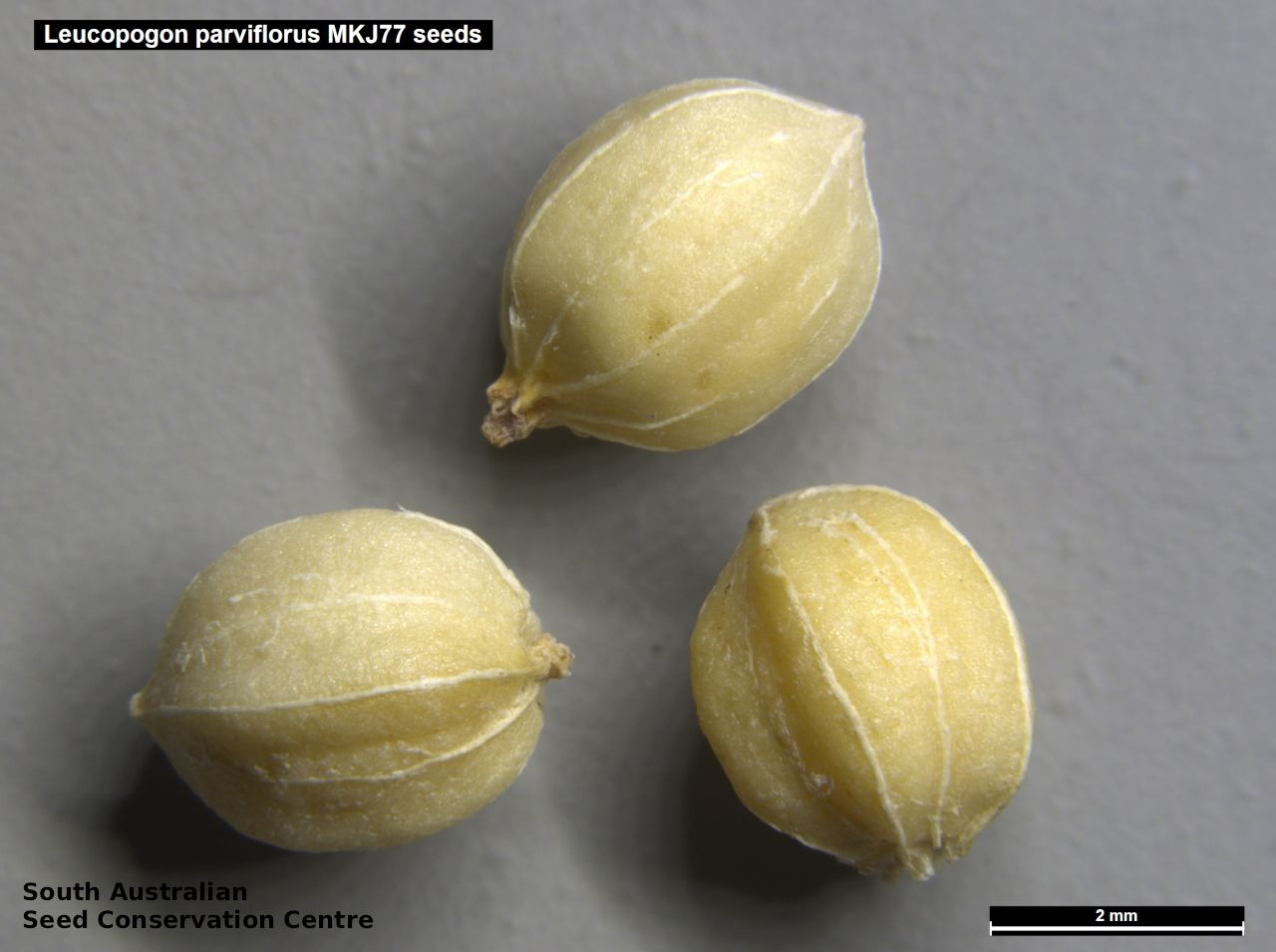
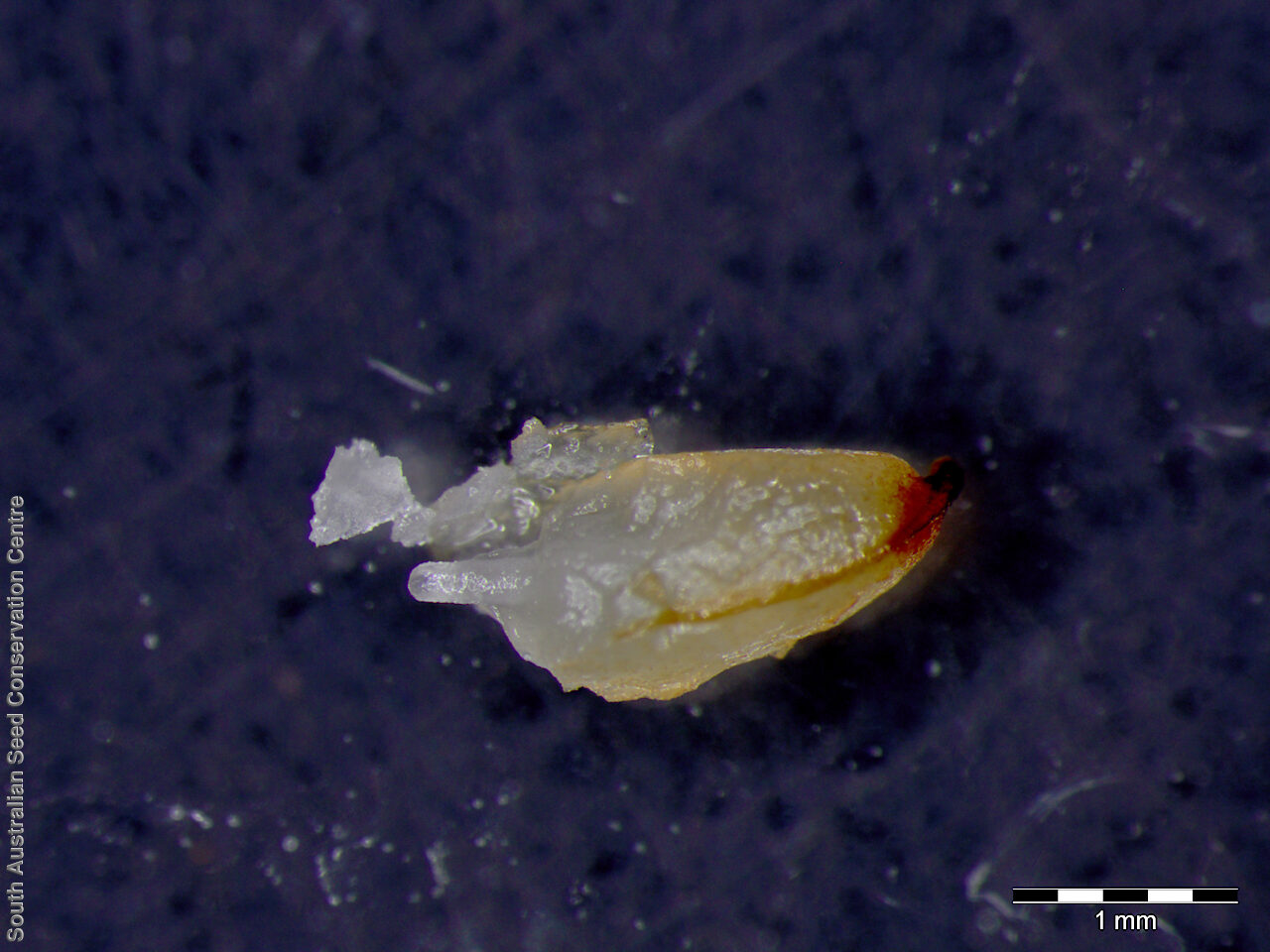
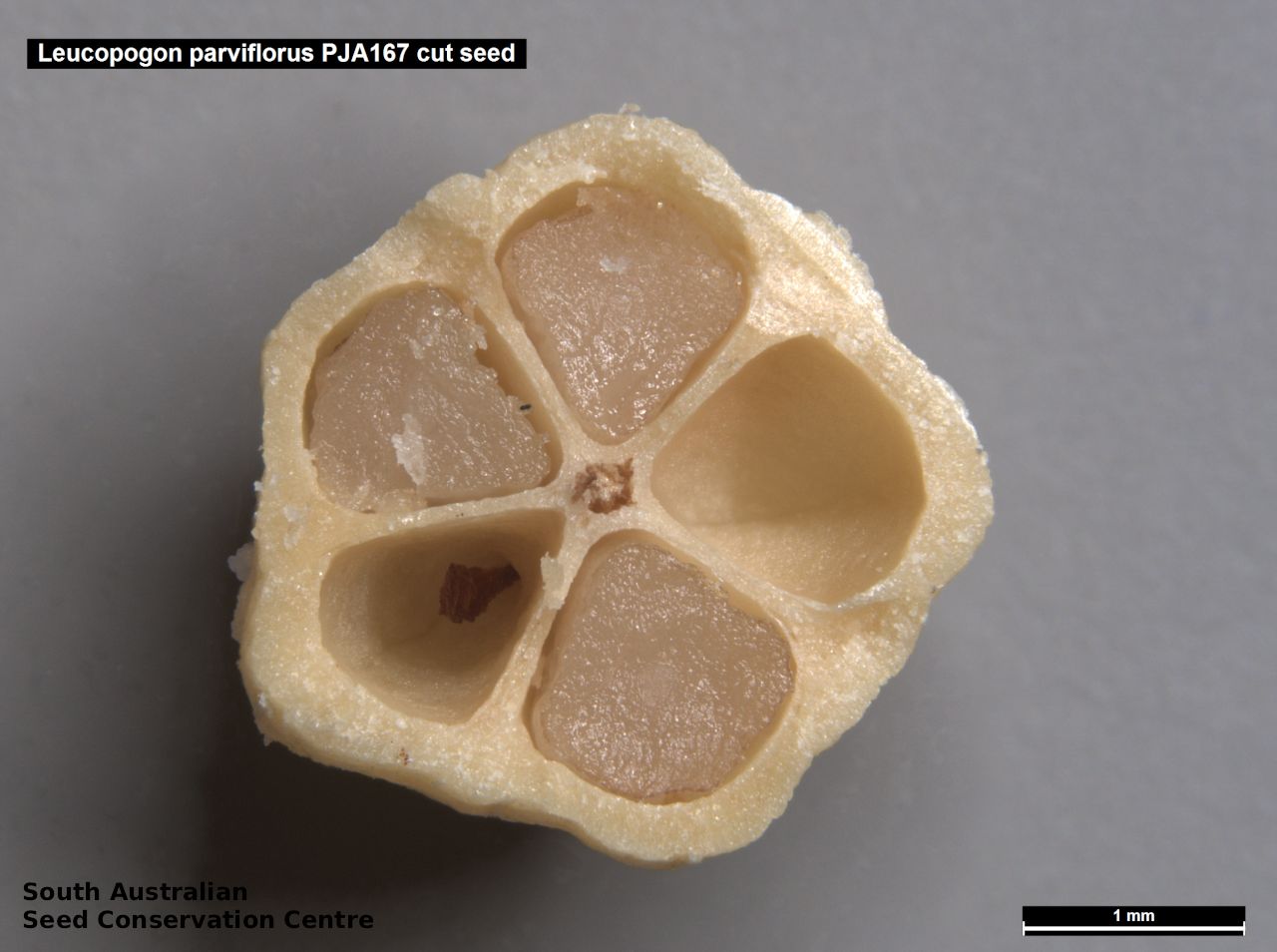
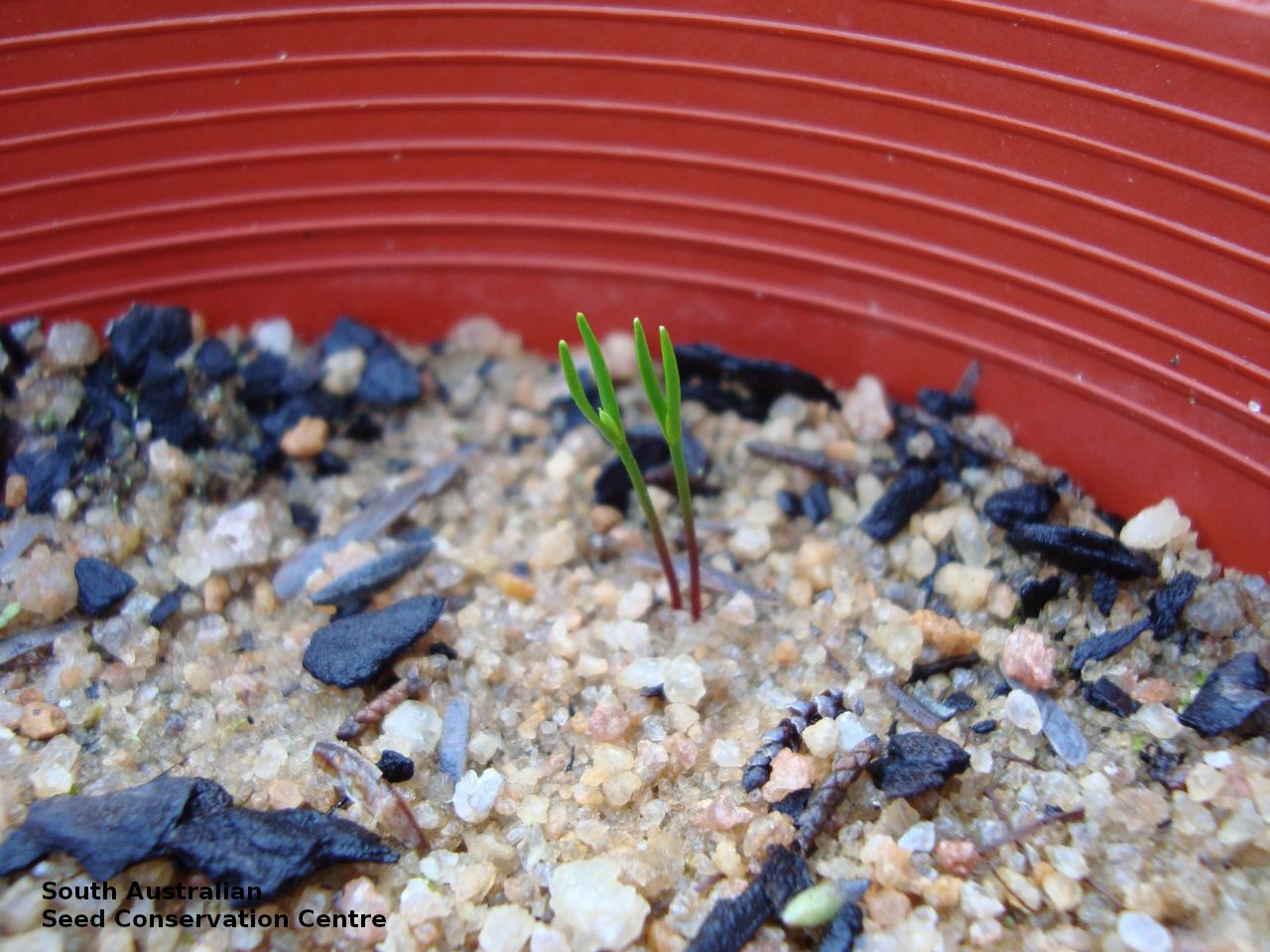
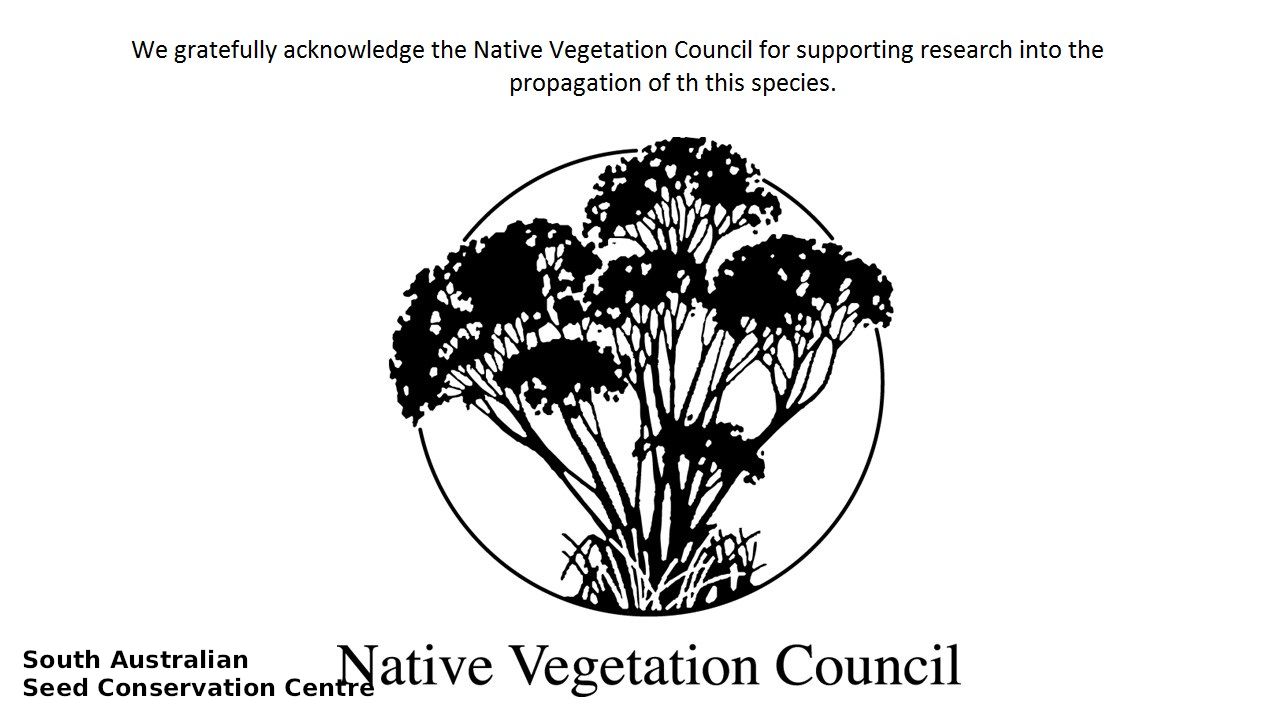

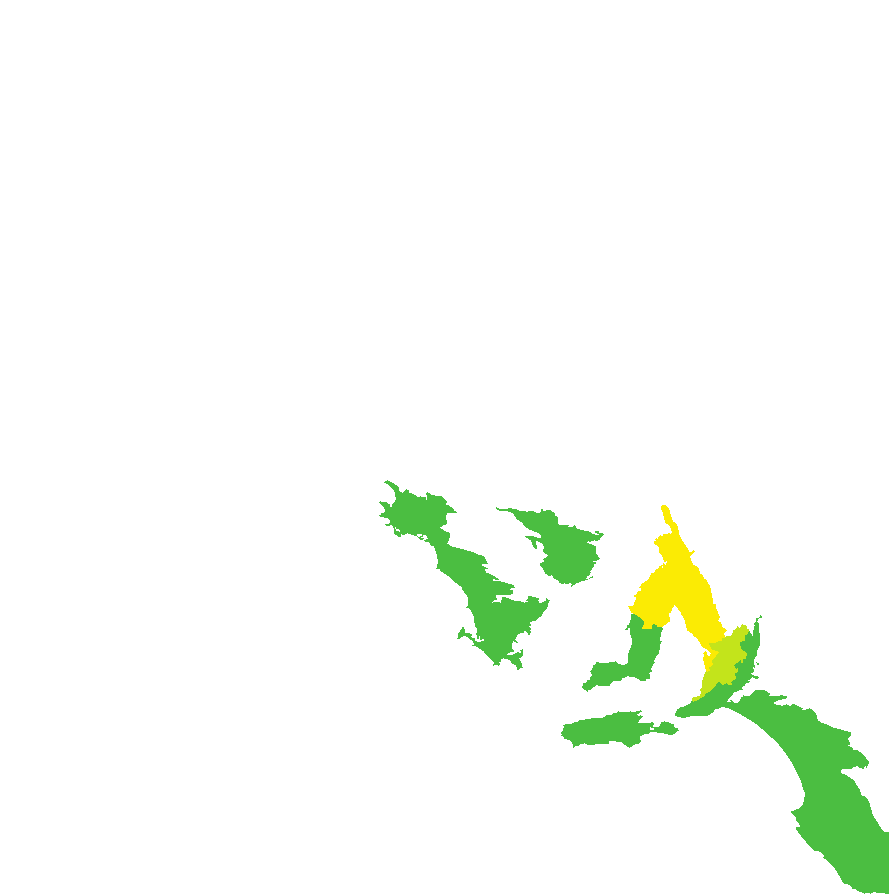
Botanical art
Prior names
Styphelia richei
Leucopogon richei
Styphelia parviflora
Common names
Coastal Beard-heath
Coast Beard-heath
Etymology
Leucopogon, from the Greek 'leukoni', meaning white and 'pogon', meaning beard, alluding to the white-bearded corolla lobes. Parviflorus, from the Latin 'parvi', meaning small and 'floris' ,meaning flower.
Distribution and status
Grows on coastal sand dunes and in coastal heath from Eyre Peninsula to the lower South-east in South Australia. Also found in all States except in the Northern Territory. Also found in New Zealand Native. Common in South Australia. Common in the other States.
Herbarium regions: Eyre Peninsula, Yorke Peninsula, Southern Lofty, Kangaroo Island, South Eastern, Green Adelaide
NRM regions: Adelaide and Mount Lofty Ranges, Eyre Peninsula, Kangaroo Island, Northern and Yorke, South East
AVH map: SA distribution map (external link)
Plant description
Erect shrub or small tree to 5 m high. Leaves to 29 mm long and 7.5 mm wide; elliptic to oblanceolate, apex obtuse; lower surface paler with parallel veins. Inflorescence, a densely clustered spike with white flowers; corolla tube to 1.7 mm long, finely pubescent inside. Flowers throughout the year but mainly between September and December. Fruits are fleshy round berries to 5 mm long; green, then becoming translucent white when ripe. Seeds are pale yellow woody globular seeds to 4 mm diameter, with ridges. Seed embryo type is linear, under-developed.
Seed collection and propagation
Collect seeds between November and February. Collect berries that are white with a hard seed. Place the berries in a bucket of water and leave to soak overnight. Rub the flesh off by hand. Drain and wash again if required to remove all the fleshy parts. Then spread the wet seeds onto paper towels and leave to dry. Store the seeds with a desiccant such as dried silica beads or dry rice, in an air tight container in a cool and dry place. Seed viability can be variable depending on the collections. From five collections, the seed viability ranged from low to high - 10% to 90%. This species has morpho-physiological dormancy and is difficult to germinate.
| Location | No. of seeds (weight grams) | Number of plants | Date collected | Collection number Collection location | Date stored | % Viability | Storage temperature |
|---|---|---|---|---|---|---|---|
| MSB | 3,100 (62.5 g) | 60-70 | 3-Feb-2005 | DJD107 South Eastern | |||
| BGA | 2,000 (29.28 g) | 50 | 21-Jan-2005 | MKJ77 South Eastern | 28-Mar-2006 | 10% | -18°C |
| BGA MSB | 1,000 (26.9 g) 1,000 (26.9 g) | 100 | 3-Feb-2005 | DJD103 South Eastern | 28-Mar-2006 | 25% | -18°C |
| MSB | 3,200 (27.2 g) | 50+ | 11-Jan-2007 | TST156 South Eastern | |||
| BGA | 5,000 (128.32 g) | 40 | 31-Jan-2008 | PJA167 South Eastern | 1-Jun-2010 | 90% | -18°C |
| BGA | 2,700 (31.7 g) | 26-Jan-2003 | Kingston South Eastern | 15-Feb-2011 | 80% | -18°C |
Number of plants: This is the number of plants from which the seeds were collected.
Collection location: The Herbarium of South Australia's region name.
% Viability: Percentage of filled healthy seeds determined by a cut test or x-ray.